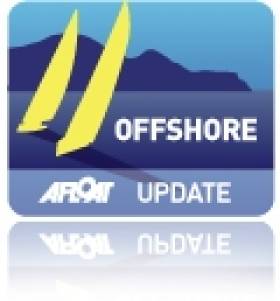Displaying items by tag: Storm Trysail Club
Two Irish Boats for Transatlantic Race 2011
Two big names in Irish offshore racing are among the 30-boat fleet preparing for the Transatlantic Race 2011 (TR 2011) this June. Last night the organisers, the Royal Yacht Squadron, New York Yacht Club, Royal Ocean Racing Club and Storm Trysail Club, extended the deadline to enter the Race to March 31, 2011.
Adrian Lee's Cookson 50 from Dublin Bay and the Limerick Volvo 70 skippered by Ger O' Rourke's both make the entry list although the Shannon estuary's Chieftain is described only as a 'provisional' entry. For Entry list click HERE.
With the Transatlantic fleet now over 30 entries and many new inquiries following the success of the RORC Caribbean 600 - part of the companion Atlantic Ocean Racing Series - the organisers encourage those interested to enter the TR 2011 as soon as possible to secure a spot since the Notice of Race notes a maximum of 50 yachts for the race.
The TR 2011 will cover 2,975 miles from Newport, R.I., to the Lizard in England. The focus of pre-race activities will be the New York Yacht Club's Harbour Court clubhouse in Newport, R.I. There will be three staggered starts from June 26 to July 3. The awards ceremony on August 9th and other post-race activities will be held at the Castle, the home of the Royal Yacht Squadron in Cowes, England.
The fleet will include IRC Racing, IRC Racer/Cruiser, Classic and Open divisions with a minimum length overall (LOA) of 40 feet and no maximum. Competition is building within several segments of the diverse fleet, notably the 100' and up range which includes Sojana, Rambler 100, ICAP Leopard, and Maltese Falcon.
Tight racing is also expected in other classes and divisions, such as yachts in the under 50' range in IRC Racing and IRC Racer/Cruiser including the Class 40s - Concise 2, Dragon, and Kamoa'e, the Rogers 46s - Shakti and Varuna, as well as British Soldier ASA, Jacqueline IV, Sasha, Dawn Star, and Carina. For a complete list of entries click here.
All race documents are available HERE.
The TR 2011 is the centerpiece of the Atlantic Ocean Racing Series (AORS), and is organized in concert with the following clubs: Royal Malta Yacht Club, Annapolis Yacht Club, Ida Lewis Yacht Club, Montego Bay Yacht Club, Naval Academy Sailing Squadron, Jamaica Yachting Association, Antigua Yacht Club and Real Club Nautico de Sanxenxo.
Two races in the AORS have been completed: the Pineapple Cup - Montego Bay Race and the RORC Caribbean 600. The Pineapple Cup, from Ft. Lauderdale, Fla. to Montego Bay, Jamaica, a distance of 811 miles, was won by Genuine Risk, a 97-foot canting keel super maxi skippered by Hugo Stenbeck. In the RORC Caribbean 600, George David's Rambler 100, took line and overall IRC honors and set the monohull record of one day, 16 hours, 20 minutes and 2 seconds for the course's 600 miles.























